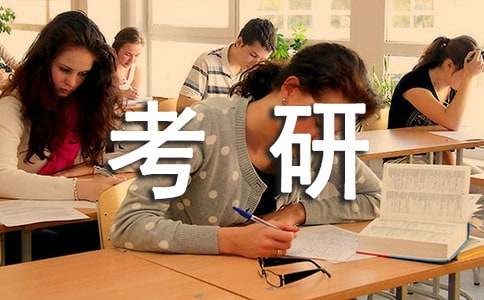- 相關(guān)推薦
2017考研:歷年英語翻譯真題
翻譯規(guī)定是,能將一定難度的英語短文譯成漢語,理解基本正確,譯文達意。考研英語翻譯主要是長句和短句的翻譯,有一定難度,不過如果我們能夠掌握足夠的技巧就會事半功倍的效果。以下是應(yīng)屆畢業(yè)生小編給大家整理提供的真題內(nèi)容,快來閱讀看看吧。

2017考研:歷年英語翻譯真題(1)
2000年全國考研英語翻譯真題及答案解析
Section IV English-Chinese Translation
Directions:
Read the following passage carefully and then translate the underlined sentences into Chinese. Your translation must be written clearly on ANSWER SHEET 2. (15 points)
Governments throughout the world act on the assumption that the welfare of their people depends largely on the economic strength and wealth of the community. 1) Under modern conditions, this requires varying measures of centralized control and hence the help of specialized scientists such as economists and operational research experts. 2) Furthermore, it is obvious that the strength of a country’s economy is directly bound up with the efficiency of its agriculture and industry, and that this in turn rests upon the efforts of scientists and technologists of all kinds. It also means that governments are increasingly compelled to interfere in these sectors in order to step up production and ensure that it is utilized to the best advantage. For example, they may encourage research in various ways, including the setting up of their own research centers; they may alter the structure of education, or interfere in order to reduce the wastage of natural resources or tap resources hitherto unexploited; or they may cooperate directly in the growing number of international projects related to science, economics and industry. In any case, all such interventions are heavily dependent on scientific advice and also scientific and technological manpower of all kinds.
3) Owing to the remarkable development in mass-communications, people everywhere are feeling new wants and are being exposed to new customs and ideas, while governments are often forced to introduce still further innovations for the reasons given above. At the same time, the normal rate of social change throughout the world is taking place at a vastly accelerated speed compared with the past. For example, 4) in the early industrialized countries of Europe the process of industrialization -- with all the far-reaching changes in social patterns that followed -- was spread over nearly a century, whereas nowadays a developing nation may undergo the same process in a decade or so. All this has the effect of building up unusual pressures and tensions within the community and consequently presents serious problems for the governments concerned. 5) Additional social stresses may also occur because of the population explosion or problems arising from mass migration movements -- themselves made relatively easy nowadays by modern means of transport. As a result of all these factors, governments are becoming increasingly dependent on biologists and social scientists for planning the appropriate programs and putting them into effect.
答案解析
Section IV: English-Chinese Translation (15 points)
1. 在現(xiàn)代條件下,這需要程度不同的中央控制,從而就需要獲得諸如經(jīng)濟學(xué)和運籌學(xué)等領(lǐng)域?qū)<业膮f(xié)助。
2. 再者,顯而易見的是一個國家的經(jīng)濟實力與其工農(nóng)業(yè)生產(chǎn)效率密切相關(guān),而效率的提高則又有賴于各種科技人員的努力。
3. 大眾通訊的顯著發(fā)展使各地的人們不斷感到有新的需求,不斷接觸到新的習俗和思想,由于上述原因,政府常常得推出更多的革新。
4. 在先期實現(xiàn)工業(yè)化的歐洲國家中,其工業(yè)化進程以及隨之而來的各種深刻的社會結(jié)構(gòu)變革,持續(xù)了大約一個世紀之久,而如今一個發(fā)展中國家在十年左右就可能完成這個過程。
5. 由于人口的猛增或大量人口流動(現(xiàn)代交通工具使這種流動相對容易)造成的種種問題也會對社會造成新的壓力。
2017考研:歷年英語翻譯真題(2)
1999年全國考研英語翻譯真題及答案解析
Section IV English-Chinese Translation
Directions:
Read the following passage carefully and then translate underlined sentences into Chinese. Your translation must be written clearly on ANSWER SHEET 2. (15 points)
1) While there are almost as many definitions of history as there are historians, modern practice most closely conforms to one that sees history as the attempt to recreate and explain the significant events of the past. Caught in the web of its own time and place, each generation of historians determines anew what is significant for it in the past. In this search the evidence found is always incomplete and scattered; it is also frequently partial or partisan. The irony of the historian’s craft is that its practitioners always know that their efforts are but contributions to an unending process.
2) Interest in historical methods has arisen less through external challenge to the validity of history as an intellectual discipline and more from internal quarrels among historians themselves. While history once revered its affinity to literature and philosophy, the emerging social sciences seemed to afford greater opportunities for asking new questions and providing rewarding approaches to an understanding of the past. Social science methodologies had to be adapted to a discipline governed by the primacy of historical sources rather than the imperatives of the contemporary world. 3) During this transfer, traditional historical methods were augmented by additional methodologies designed to interpret the new forms of evidence in the historical study.
Methodology is a term that remains inherently ambiguous in the historical profession. 4) There is no agreement whether methodology refers to the concepts peculiar to historical work in general or to the research techniques appropriate to the various branches of historical inquiry. Historians, especially those so blinded by their research interests that they have been accused of “tunnel method,” frequently fall victim to the “technicist fallacy.” Also common in the natural sciences, the technicist fallacy mistakenly identifies the discipline as a whole with certain parts of its technical implementation.
5) It applies equally to traditional historians who view history as only the external and internal criticism of sources, and to social science historians who equate their activity with specific techniques.
答案解析
Section IV: English-Chinese Translation (15 points)
1. 幾乎每個歷史學(xué)家對史學(xué)都有自己的界定,但現(xiàn)代史學(xué)家的實踐最趨向于認為歷史學(xué)是試圖重現(xiàn)過去的重大史實并對其做出解釋。
2. 人們之所以關(guān)注歷史研究的方法論,主要是因為史學(xué)界內(nèi)部意見不一,其次是因為外界并不認為歷史是一門學(xué)問。
3. 在這種轉(zhuǎn)變中,歷史學(xué)家研究歷史時,那些解釋新史料的新方法充實了傳統(tǒng)的歷史研究方法。
4. 所謂方法論是指一般的歷史研究中的特有概念,還是指歷史探究中各個具體領(lǐng)域適用的研究手段,人們對此意見不一。
5. 這種謬誤同樣存在于歷史傳統(tǒng)派和歷史社科派;前者認為歷史就是史學(xué)界內(nèi)部和外部人士對各種史料來源的評論,后者認為歷史的研究是具體方法的研究。
【考研:歷年英語翻譯真題】相關(guān)文章:
臺州銀行歷年真題筆試題+面試題考試大全02-24
法院面試真題09-26
聯(lián)想筆試真題09-26
上海A卷面試真題09-26
格力筆試真題分享11-21
金蝶公司筆試真題09-26
中興硬件筆試真題09-26
檢察院面試真題06-26
青島校園招聘 筆試真題11-21
五百強面試的真題11-19